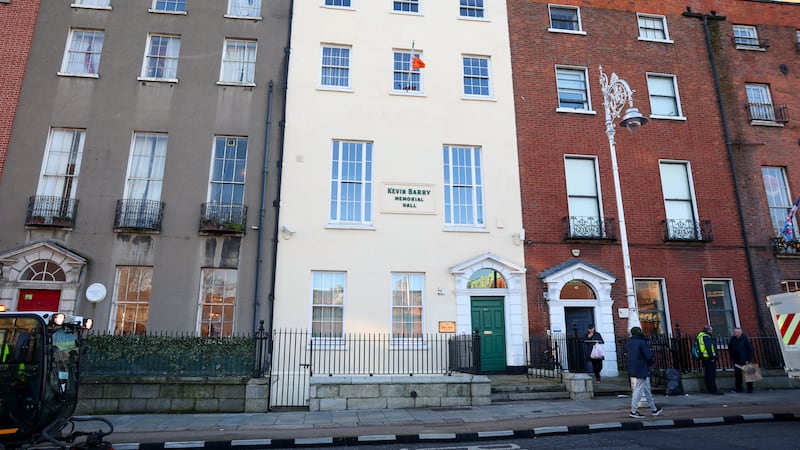Cornelius “Corny” Kelleher is only a secondary character in Joyce’s Ulysses, but one with an important job. As a professional undertaker, during the episode known as Hades, it is he who consigns “poor Paddy Dignam” to the earth of Glasnevin Cemetery.
Henry Flower, meanwhile, is hardly a character at all. His is merely the cover name Leopold Bloom adopts in correspondence with a lady whose latest letter – collected discreetly from a post office box – calls Bloom a “poor little naughty boy” and threatens (or promises) punishment. But as is well known to Joyceans, there was a real and notorious Henry Flower in the Dublin of that period: a policeman implicated in the suspicious death by drowning of one Brigid Gannon, a servant, whose body was found in the Dodder river, near Lansdowne Road, on August 23rd, 1900.
And it now emerges that there was a real-life Corny Kelliher (so spelt) too: also a policeman in Irishtown, and also involved in that case.
Scholarly investigations of Ulysses are a century old and extend around the globe. But this latest breakthrough came at the Joyce Symposium in Trinity College on Tuesday, where journalist and Joycean detective Senan Molony laid out the case against the historical Corny. Essentially, it was one of dereliction of duty. As Constable 124E, he was assigned to patrol the Dodder bank on the night Brigid Gannon drowned but was said to have been “otherwise engaged” (probably in female company), a euphemism that drew laughter in court. His negligence was serious enough that he was transferred from the problematic E Division to the city centre’s C Division, and later dismissed. It also formed part of a generally damning portrait of low standards in the force then that may have precipitated the resignation of the Dublin Metropolitan Police commissioner in late 1900.
READ MORE
Flower, meanwhile, was charged with murder, partly on the evidence of a friend of the dead woman who identified him as having been with her on the fatal night.
The case was thrown out eventually but he had to resign from the force and, as Vivien Igoe writes in The Real People of Joyce’s Ulysses, he and several members of his family “left Dublin in haste”.
He was ultimately cleared even of lingering suspicions, Igoe suggests: “Forty years later an elderly dying woman in a tenement admitted she had pushed Brigid Gannon into the Dodder, taken her cash and set up Henry Flower.”
Meanwhile, back in Ulysses, Joyce drops of a series of hints as to the possible model for his fictionalised undertaker. Leopold Bloom, for example, notices that Kelleher has “policeman’s shoulders”. Then there is the black joke Joyce seems to be playing when he has his characters discuss the potential in Dublin for continental-style funeral trams. That would be a “poor lookout for Corny”, suggests Jack Power. But, as the symposium heard on Tuesday, a poor lookout is what the real-life Corny was.
Joyce may also have been echoing the 1900 story when, in the Nighttown episode, after a drunken Stephen Dedalus (the author’s alter ego) is punched by a British soldier, it is the same Corny who comes to his rescue and organises the cover up.
“We don’t want any scandal,” he tells the patrolling policemen who come upon the scene. He then assures the senior officer: “Leave it to me Sergeant. That’ll be all right.”
Four years earlier, a real-life sergeant in Irishtown had given a real-life Corny Kelliher orders for the evening which, had they been acted on, might have made things all right for Brigid Gannon.
But they weren’t, and she died. And when the Corny of Ulysses says to the policemen: “We were often as bad ourselves, ay or worse,” they have no difficult agreeing. “I suppose so,” laughs one. “Ah, sure we were too,” says the other.
Among Molony’s possessions, presented in evidence to the symposium, is a medal awarded to the policeman Corny Kelliher for his services in helping protect Queen Victoria during her 1900 visit. His contrasting failure to protect the servant Brigid Gannon cost not only his career, but also seems to have earned him a more dubious testimonial from Joyce, who sentenced him to spend literary eternity as an undertaker.
Real-life may have supplied another layer of irony. Two of Kelliher’s brothers were also policemen in Dublin and now, like Paddy Dignam, are buried in Glasnevin. But after the ignominious end to this career, Cornelius Kelliher moved back to the family farm in Kerry. He died of pneumonia aged only 34. And ironically, for a man who may be commemorated by a famous literary undertaker, his actual grave appears to be unmarked.















